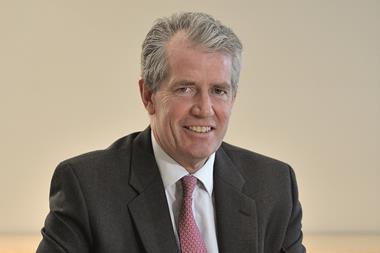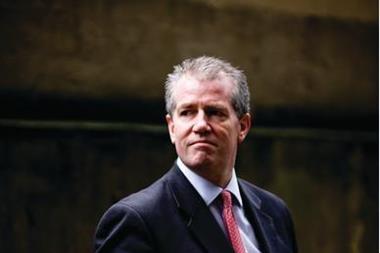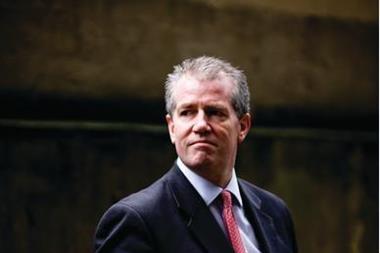Lonmar Global Risks’ chief executive is in charge of a big broker with big plans. But he’s not embarking on this endeavour alone, as he’ll get by with a little help from his friends
Simon Rice, at 6ft-plus and 15 stone, is a bulldozer of a man. He loves golf, and you can just imagine his powerful frame is responsible for more than a few 300-yard rockets down the fairway. He’s a big man, with big responsibilities.
As chief executive of Lonmar Global Risks, Rice’s company controls $400m (£263m) gross written premium in varied lines, such as bloodstock, accident and health, fine art, casualty and binding authority. It’s a bit of beast but, having only recently gained its independence, still has a way to go before getting the full recognition its size deserves.
Perhaps that’s why Rice is here with Insurance Times today, to shine light on this newly formed titan. There’s a lot to talk about; it has been a real rollercoaster ride since he took the helm of the broker, then called SBJ Global Risks, in January 2008.
Just a few months after his arrival, AXA bought out private equity house Capital Z’s stake to take control of SBJ Group. AXA was more interested in the UK retail side, however, rather than the SBJ Global Risks arm, which had more of an international client base.
Rice seized the initiative, leading a management buyout (MBO) from the French group in August last year. Since then it’s been all stations go: Lonmar has made new appointments, including a chief operating officer, undergone a rebrand, and laid out plans for a managing general agency (MGA) footprint.
Strong support
All this would not have been possible without AXA’s co-operation in the MBO. Rice recalls: “Initially, they left us alone, because we were a different entity in the group. They really bought SBJ Group because it was UK retail and employee benefits, which is about 75% of the company.
“And after that there was the wholesale operations, which really didn’t fit into the AXA Bluefin brand. That allowed me to have discussion with AXA about a management acquisition.”
Although Rice does not go into the nitty-gritty details of how the MBO was funded, he thanks staff throughout the company for backing the deal with their own equity. Maybe that’s why Rice uses the word ‘flattered’ several times during the interview. He says: “I was flattered when the employees invested their own money; it’s an enormous compliment to have their trust delivered in the company. It’s up to all of us to develop the company accordingly."
You sense that Rice is well aware of his huge responsibilities. If everyone is pulling in the right direction, a staff-backed MBO is a formula that can work well. Rice need look no further than a few doors down at United Insurance Brokers.
But if the business falters, the shareholders aren’t faceless institutions fanned out across the world. They’re right there on the doorstep, demanding answers. His success is their success. Some might say it’s a good incentive to get it right.
Certainly, Rice is prepared to make the necessary sacrifices, putting in the de rigeur 12-hour days. Asked about the workload, he says matter-of-factly: “This is what I do.”
Luckily, he’s got chief operating officer Duncan Vinten, a trusty lieutenant signed up after the MBO, to share some of the burden. Vinten already knows the ropes because he was formerly administration director at SBJ Group.
Rice enthuses: “He was a great hire for us; we work together incredibly well as chief executive and COO. We’ve got a great team around us too, and it helps having someone of his qualities to help us develop the business according …”
Rice trails off, and he grins and chuckles. “I don’t want to blow too much smoke,” he says.
Despite the long days, Rice has managed to maintain his sense of humour. Those who know him say he’s a London market man through and through. Bluefin chief executive Stuart Reid says: “Simon is a very professional insurance man – reliable, and knows his market better than most. He’s someone whom I have the upmost respect for. He’s very much top-down Lloyd’s London market. He’s got a good London market reputation.”
Indeed, Rice has spent most of his career steadily progressing up the London market career ladder. He initially fell into insurance, in the 1970s. He worked in South Africa during the apartheid era of the ’80s, before coming back to London to pursue his career. His CV lists a range of brokers, including Heath (now Heath Lambert), Harris & Dickson (now part of BMS Group), Leumi Insurance Services and Nelson Hurst. The big break came in 2005 upon becoming head of SBJ’s international division. The rest, as they say, is history.
Clear vision
Rice has big plans for Lonmar, including an MGA launch, so there’s no resting on his laurels. Lonmar is one of the biggest binding authority brokers in the London market, so the MGA should be a natural progression.
He explains: “Our main focus is specialist MGAs, because there is a niche in the marketplace for it. If you’re doing a general one, it doesn’t really work.”
He says the MGA will have a different name to its recently rebranded business Lonmar. And on the topic of Lonmar, why the name? “It’s to emphasise our roots in the London market.”
Rice pulls out an old press release: suddenly, he sounds very corporate. “I think the words we used were ‘reposition ourself’ in the marketplace. While the name has changed, our commitment and passion for the business is as strong as ever.”
You get the feeling that Rice is still getting to grips with all the sudden limelight. But it’s early days and he’s done pretty well so far in bringing the business out of the shadows.
When asked about his vision for premium income growth, he says: “The idea is to grow the company organically, and become an employer of choice for new buyers. It’s always easy to quote numbers but not so easy to achieve.
“But I think with the people we have here and the management in place, and the opportunities we have as an independent operator, we will grow the company substantially over the next three to five years – from a broking point of view and the MGA.
“I think when we look back in five years’ time, this company will be a very different beast to what it is now.”
The last two years have seen an MBO, a rebrand, plans for an MGA and new faces at the top. If that’s anything to go by, the next five years will be pretty eventful. But that should be par for the course for this chief executive and his team. IT






































No comments yet